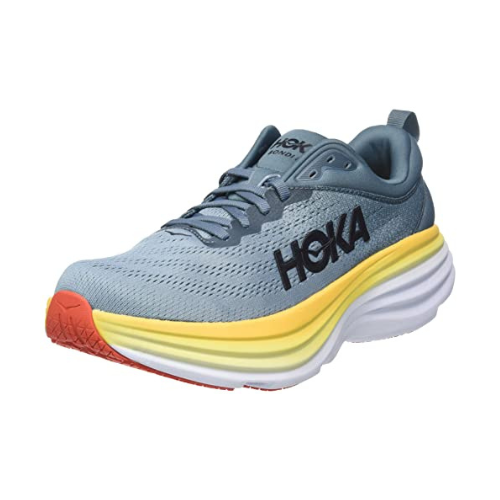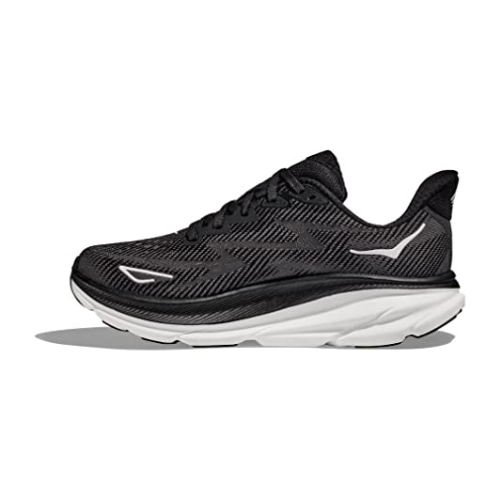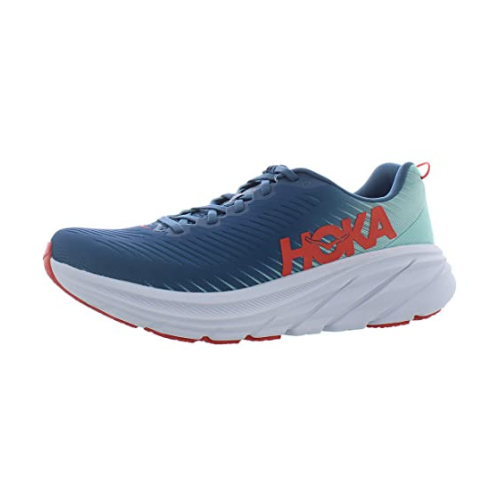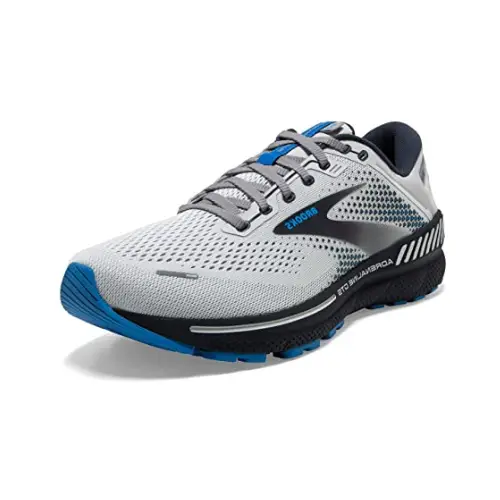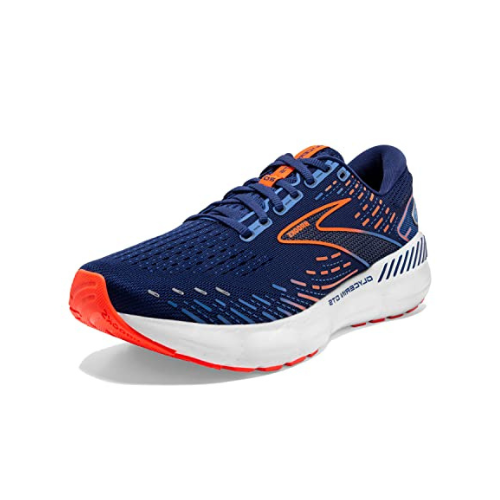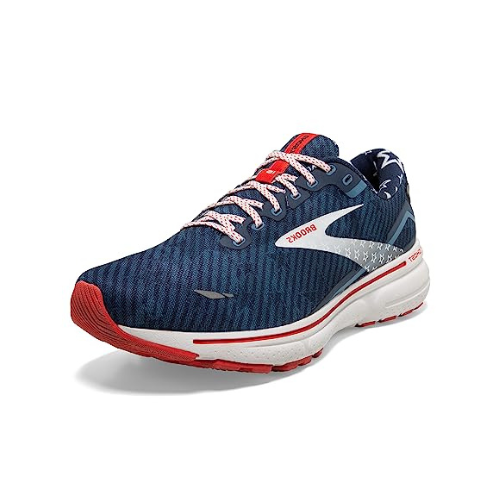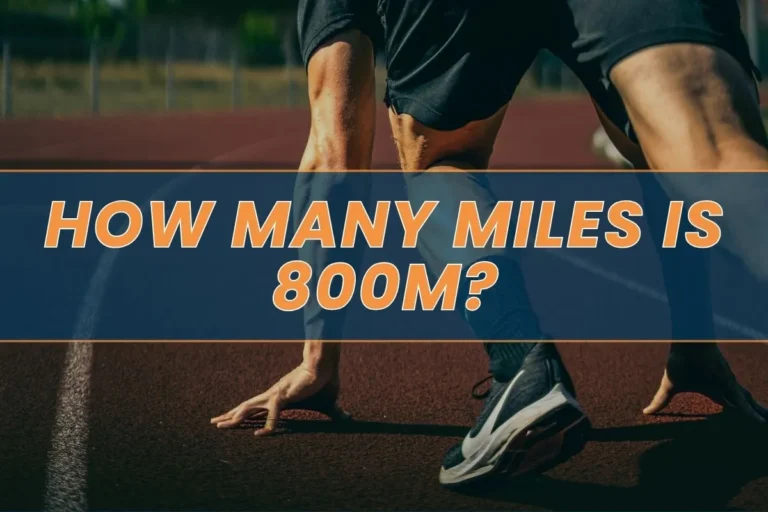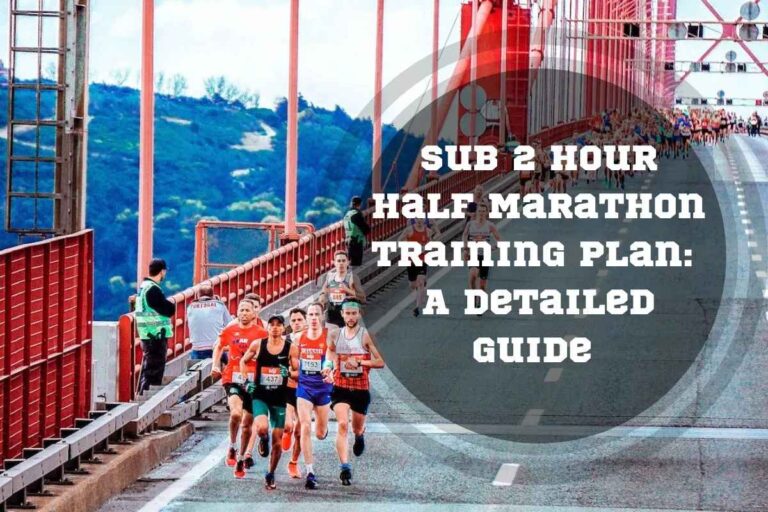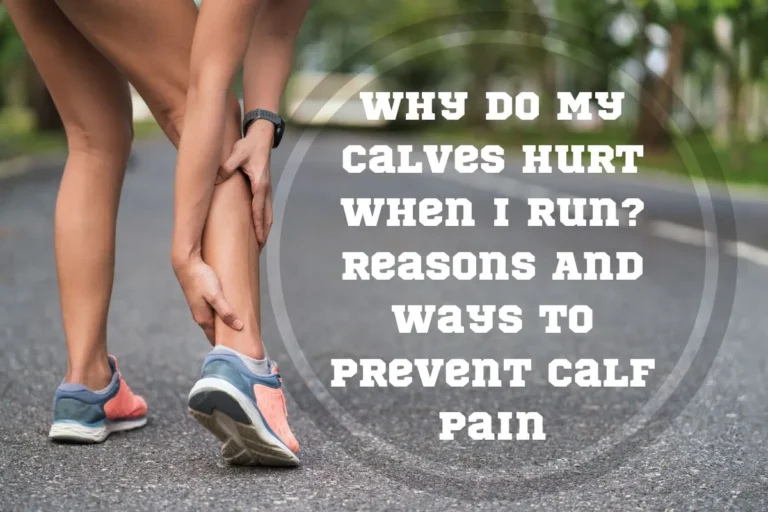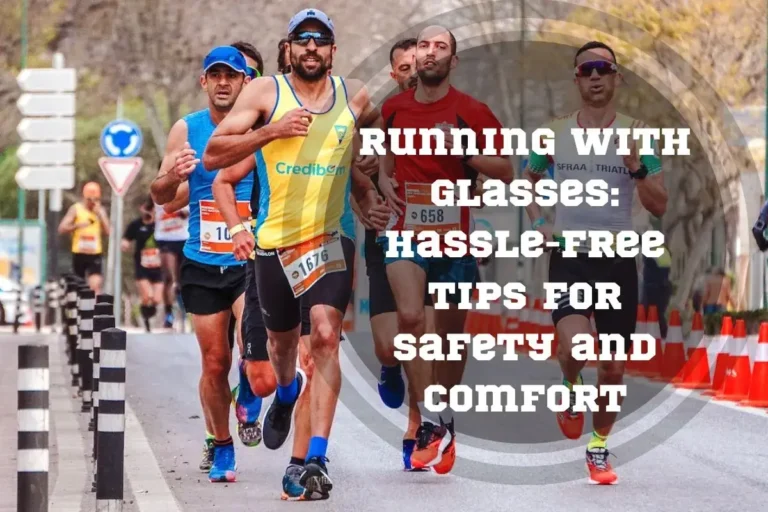Hoka vs. Brooks Running Shoes: 5 Main Differences
Many runners find themselves choosing between Hoka vs. Brooks running shoes for the best fit. To help you make the best decision possible, it is important to understand the main differences between these two popular brands.
Today, we will compare the features of Brooks running shoes vs. Hoka, with a focus on cushioning, fit and sizing, stability, and support.
Let’s dive in!
What are the key features of Hoka & Brooks shoes?
Whether you decide on Hoka or Brooks for running shoes, both offer a wide variety of models that cater to different needs, such as overpronation, cushioning, and trail running. Hokas feature maximum cushioning to provide lightweight support, with energy return for responsive transitions. Brooks’ midsole offers superior shock absorption, with ample energy return. Meanwhile, 3D Fit Print overlays add stability during faster runs.
What Are Hoka Running Shoes?
Hoka running shoes are famous for their ultra-cushioned soles, providing superior shock absorption and comfort. Their assortment of running shoes features specific models designed to address issues like arch strength and pronation. Hokas have special materials, such as EVA foam midsoles, which offer more cushioning than traditional running trainers.
With a wide range of sizes, Hokas has you covered, no matter your size or foot shape. Meanwhile, lightweight mesh uppers ensure breathability so your feet stay cool even on long runs. It’s unsurprising that Hoka One One has become such a phenomenon among runners. They provide super supportive shoes for many different types of feet, while also being incredibly comfortable thanks to that unbeatable cushioning.
Hokas offer a wide range of options to support runners on different surfaces and address various foot problems. Hoka’s shoes are specifically designed with extra-padded soles that cushion the feet during impact while providing arch support to prevent overpronation.
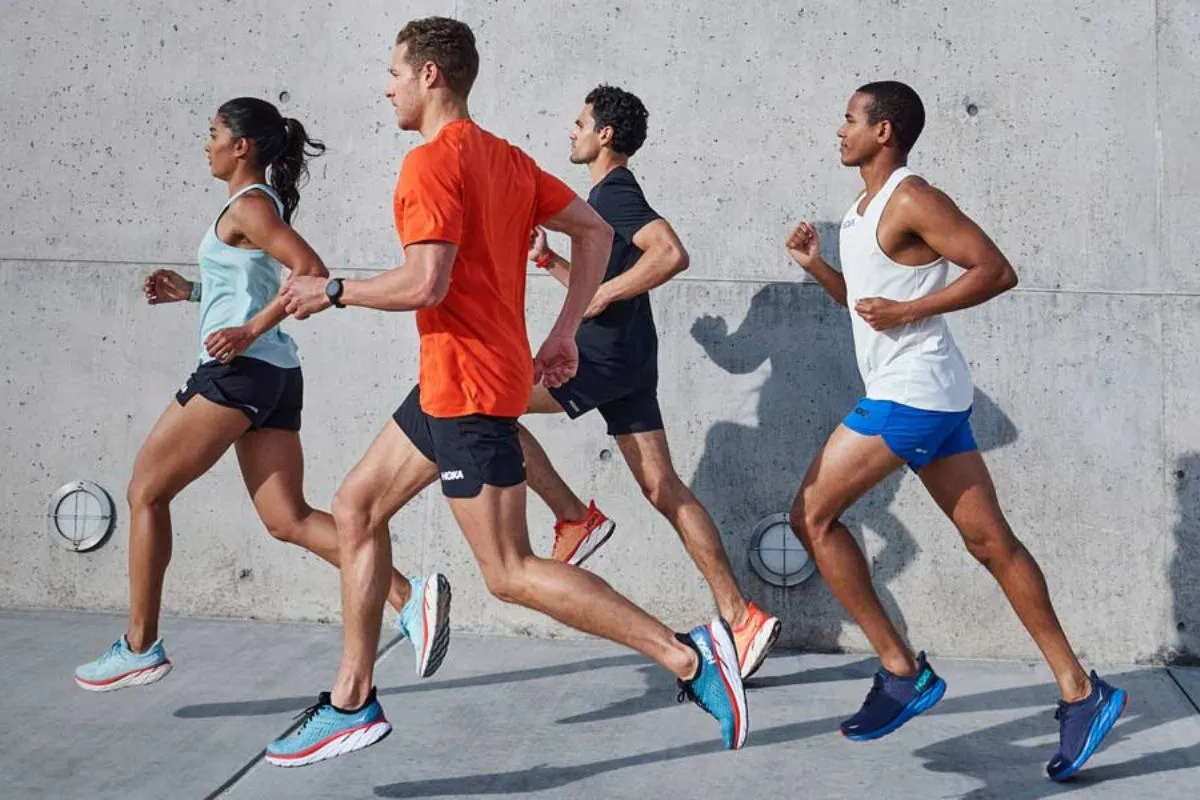
What Are Brooks Running Shoes?
Many people wonder, “Are Brooks good running shoes?” The brand has developed widely acclaimed technologies, such as DNA loft midsole cushioning and Released Energy foam, providing superior impact absorption without sacrificing responsiveness. These features make Brooks an incredibly popular shoe among serious runners who rely on trusted quality when putting in the miles.
Brooks offers a variety of running shoe models to cater to different needs, like overpronation, cushioning, and trail running. From traditional road shoes for pavement or track racing to cushioned shoes for long-haul runs, they have something for just about everyone.
Brooks also has more conventional shoes, but even these provide ample cushioning options, combined with stability and agility for a wide range of runners’ feet issues.
Their running shoes are designed to accommodate different foot shapes and sizes. Brooks recommends sizing up half a size from your street shoe or usual running shoe size. This is due to the company’s snugger design, which provides extra support through gripping locks at arch level.
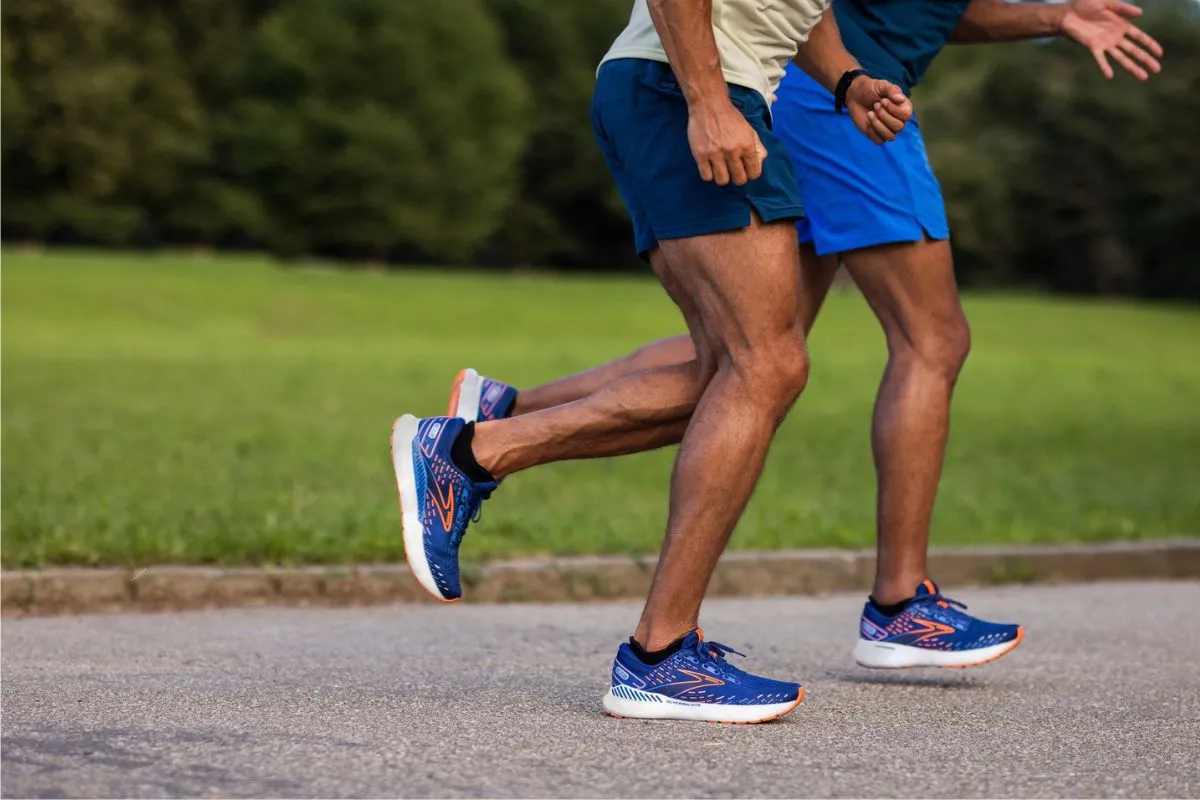
Hoka vs Brooks: What Are the Main Differences?
So, what shoe is better: Hoka or Brooks? Comparing durability, fit and sizing, cushioning, stability, and the price of Hoka and Brooks running shoes will help you to decide which is better for your needs.
1. Durability
When it comes to durability, both Hoka and Brooks running shoes offer comfortable and reliable options and last a similar length of time. The exact lifespan of each pair varies, but runners can generally expect a pair of Hoka shoes to last between 300 and 500 miles, while Brooks shoes will usually outlast this figure slightly due to extra durable outsole.
Both brands have models that utilize next-generation technologies, such as cushioning foam uppers and special sole designs that make them especially durable during long runs.
2. Fit and Sizing
When it comes to Hoka sizing vs. Brooks, there are some notable differences. Brooks suggests that you size up half a size from your normal shoe size. Meanwhile, Hoka shoes tend to fit true to size. They are designed with a wider platform than Brooks shoes, and they are better suited for wide feet. That being said, both brands offer various models in different sizes, ensuring that every foot type can run comfortably!
3. Cushioning
Hoka shoes are renowned for providing a maximum amount of cushioning, which helps reduce impact on feet when landing. Compared to Brooks, they have greater foam thickness in their midsoles, offering a softer running experience with maximum protection from impact.
Brooks also has excellent cushioned models, such as Adrenaline GTS 22, Glycerin GTS 20, and Ghost 15. They offer more rigid soles than Hokas, which means improved performance at faster speeds, where stability takes precedence over cushioning.
4. Stability
Both Hoka and Brooks running shoes are designed to provide optimal support and stability for runners. Hoka shoes have a larger outsole that provides more cushioning for a smoother ride and an enhanced feeling of stability on the road or trail. By contrast, Brooks running shoes have shallower midsoles that are built with traditional design features for long-term comfort. They offer greater stability when compared to the typical models from other brands.
Subscribe to Our Running Newsletter!
Get free running tips from renowned professional athletes and discounts from top-notch brands.
5. Price
When it comes to the cost of Hoka vs. Brooks running shoes, they are fairly comparable. In general, Hokas are a bit more expensive, but popular models of both brands are priced at around $130. There can be some differences in price depending on the individual shoe chosen from either brand.
For example, certain stability and trail models from either collection can increase the price tag significantly, to well above $200 for Hokas and up to $160 for Brooks.
The primary distinctions between Hoka and Brooks
| Parameter | Brooks | Hoka |
|---|---|---|
| Durability | 300-500+ miles | 300-500 miles |
| Breathability | Knit upper | Knit upper |
| Fit | Regular/Wide/X-Wide | Narrow/Regular |
| Cushioning | DNA Foam options | EVA foam |
| Stability | GuideRails Technology | J-Frame technology |
| Price | $100-$130 | $120-$150 |
What to Look for When Buying Running Shoes: Hoka vs. Brooks
When considering which brand to purchase, it is important for runners to understand the differences between Hoka and Brooks running shoes.
First, Hoka is known for its marshmallow-soft cushioning, which seems to be the obvious choice when it comes to comparing Hoka vs. Brooks for standing all day. This cushioned feel can be especially beneficial in reducing impact on runs that are longer and more intense than usual. On the other hand, Brooks boasts robust outsoles with thick coverage on the bottom. This provides extra durability that helps them last longer.

Pro Tip:
In addition to cushioning and strength, when looking at midsole features, both brands offer a unique experience that will appeal to different runner preferences.
The Guide Rails offered by Brooks provide stability along your stride path and have a wide range of options for various terrain. On the other hand, Hoka provides plenty of support through its thick midsoles.
Hoka vs. Brooks: Summary
The primary difference between Hoka shoes and Brooks shoes lies in their cushioning. Let’s summarize the main pros and cons of both brands:
Pros and Cons of Hoka Running Shoes
Hoka running shoes are known for their superior cushioning, which provides runners with extra comfort and stability when running. This greatly reduces knee and back pain, as well as any discomfort that may arise from uneven surfaces.
Additionally, the enhanced technology in Hoka shoes make them suitable for those who have foot problems such as plantar fasciitis. It provides lightweight cushioning and responsiveness while allowing the feet to move freely during runs.
However, due to this added cushion they tend to be more expensive than some of their competitors like Brooks. Furthermore, not everyone appreciates the maximalist design of Hokas, while extra cushioning may not suit all foot types for long runs. That’s why some runners prefer a traditional shoe with less cushioning instead.
Pros of Hoka:
- Extra soft cushioning
- Options for all types of arches and gaits
- Comfortable and snug for narrow feet
Cons of Hoka:
- Can be narrow for wide feet
- May not give enough stability
Pros and Cons of Brooks Running Shoes
Brooks is well-known for its science-driven shoe designs, providing runners with amazing support and shock absorption. Their shoes offer a range of technologies that provide enhanced comfort, stability, and cushioning.
DNA Loft cushioning technology delivers premium shock absorption without compromising durability or energy return. The GuideRails Holistic Support System is designed to guide the foot in making smoother transitions from heel to toe. 3D Fit Print overlays provide superior fit with strategic stretch. All these technologies combine to help runners reach peak performance.
However, some reviewers have mentioned durability issues with Brooks uppers due to thinner material construction throughout some sections.
Pros of Brooks:
- Extra durable outsole
- Options for all types of arches and gaits
- Better support and stability
Cons of Brooks:
- May not be snug enough for narrow feet
- Not very durable upper material
Our Recommendations for Hoka Running Shoes
Here, we offer our 3 best picks for Hoka running shoes:
Good for Long Runs
HOKA Bondi 8 Men’s Running Shoes
HOKA Bondi 8 Men’s Running Shoes are designed for runners looking to make long-distance running a breeze.
Featuring an ample amount of room in the toe box and a wider width range than many other shoes on the market, this reliable shoe is perfect for those with wide feet or just looking for more comfort.
- Material: Breathable and supportive mesh upper
- Sole Material: Full-length EVA midsole for maximum cushioning
- Outsole (tread feature): Durable rubber outsole with a unique lug pattern
- Drop: 4mm
- Season: Suitable for all seasons
- Special Features: Exceptional cushioning and comfort
- Size: Available in various sizes
- Type: Maximum cushioning running shoe
Good for Everyday Runs
HOKA Clifton 9 Men’s Running Shoes
The Hoka Clifton 9 is a maximalist daily trainer, designed to offer cushioning without compromising on responsiveness. It features a narrow-fitting last for closer fit and stability, with an engineered mesh upper for breathability and lightness.
The EVA midsole ensures smoother transitions, which saves energy while running any distance.
- Material: Breathable and lightweight mesh upper
- Sole Material: Cushioned EVA midsole for comfort
- Outsole (tread feature): Durable rubber outsole with strategic grooves
- Drop: 5mm
- Season: Suitable for all seasons
- Special Features: Plush cushioning and improved support
- Size: Available in various sizes
- Type: Neutral running shoe
Good for Road Runs
HOKA Rincon 3 Men’s Running Shoes
The HOKA Rincon 3 Men’s Running Shoe is a versatile trainer made for the road. Lightweight yet robust, it provides top performance with every stride.
Perfectly suited to long distances and short sprints alike, this lightweight running shoe features an advanced shock-absorbing foam. It delivers just the right level of cushioning for any surface or terrain you might be traversing.
- Material: Lightweight and breathable mesh upper
- Sole Material: EVA midsole for cushioning and responsiveness
- Outsole (tread feature): Minimal rubber outsole with strategic traction
- Drop: 5mm
- Season: Suitable for all seasons
- Special Features: Exceptional lightweight design
- Size: Available in various sizes
- Type: Neutral running shoe
Our Recommendations for Brooks Running Shoes
Here, we’ve listed the top 3 best Brooks running shoes:
Good for Everyday Runs
Brooks Men’s Adrenaline GTS 22 Supportive Running Shoe
The Brooks Men’s Adrenaline GTS 22 is designed to provide a mix of cushioning, stability, and responsiveness. It features the GuideRails Holistic Support System, which provides dynamic guidance as you run, keeping your feet on track without the added stiffness of rigid accessories.
- Material: Engineered mesh upper for breathability
- Sole Material: DNA LOFT cushioning for a soft and supportive feel
- Outsole (tread feature): Durable rubber outsole with segmented crash pad
- Drop: 12mm
- Season: Suitable for all seasons
- Special Features: Enhanced support and stability
- Size: Available in various sizes
- Type: Supportive running shoe
Good for Long Runs
Brooks Men’s Glycerin GTS 20 Supportive Running Shoe
The Brooks Men’s Glycerin GTS 20 is a feature-rich shoe designed to provide optimum support, stability, and cushioning for runners.
It includes nitrogen-infused DNA Loft v3 cushioning, which supports the foot when running on all surfaces, even over long periods of time. These shoes have comfortable internal layers that also reduce the shock from impact while running.
- Material: Engineered mesh upper for breathability
- Sole Material: DNA LOFT cushioning for a soft and supportive feel
- Outsole (tread feature): Durable rubber outsole with multidirectional tread
- Drop: 12mm
- Season: Suitable for all seasons
- Special Features: Enhanced support, plush cushioning
- Size: Available in various sizes
- Type: Supportive running shoe
Good for Road Running
Brooks Men’s Ghost 15 Neutral Running Shoe
The Brooks Men’s Ghost 15 is the perfect choice for runners looking for balanced cushioning and smooth transition. It is designed as a daily trainer, offering supreme comfort all day.
It also has a high drop, which makes it suitable for heel strikers, and provides neutral support with soft cushioning ideal for road running.
- Material: Engineered mesh upper
- Sole Material: BioMoGo DNA cushioning
- Outsole (tread feature): Segmented crash pad for smooth transitions
- Drop: 12mm
- Season: Suitable for all seasons
- Special Features: Plush cushioning, durable outsole
- Size: Available in various sizes
- Type: Neutral running shoe
Frequently Asked Questions About Brooks vs. Hoka Running Shoes
Why Do Podiatrists Recommend Hoka?
Podiatrists often recommend HOKA shoes, as they provide superior cushioning and shock absorption compared to regular running or walking shoes. With maximum cushioning, running becomes easier for athletes with knee pain, plantar fasciitis, or back pain.
How Do Hokas Fit Compared to Brooks?
Hokas fit differently than Brooks, as they are designed with a higher profile for maximum cushioning. Hokas provide less space within the shoe, providing snug comfort.
Final Thoughts on Hoka Running Shoes vs. Brooks
Hoka and Brooks are both great brands that offer their own unique features for different needs. Many runners prefer Hoka’s maximalist approach, with superior cushioning that provides better shock absorption for long runs or intense workouts.
Others prefer the science-driven designs of Brooks shoes, which provide a fine balance between comfort and performance at an affordable price point. Ultimately, it comes down to preference and what shoe fits your personal running style best.
What brand do you prefer? Please share your experience in the comments below.
Also read:
- The Best Running Tanks for Men
- Asics vs New Balance: Which Is Right for You
- The 7 Best Running Shoes for Metatarsalgia
- Asics vs Brooks: Which One Is Better
- Rucking or Running
- Is 6 Min a Good Mile Time
- Cross Country VS Track
- Difference Between Sneakers and Running Shoes
- Best Trail Running Poles
References:
- Pollard CD, et al. Influence of Maximal Running Shoes on Biomechanics Before and After a 5K Run. Orthop J Sports Med. 2018 Jun 7;6(6):2325967118775720. https://journals.sagepub.com/doi/10.1177/2325967118775720
- Kulmala JP, et al. Running in highly cushioned shoes increases leg stiffness and amplifies impact loading. Sci Rep. 2018 Nov 30;8(1):17496. https://www.nature.com/articles/s41598-018-35980-6
- Sun X, et al. Systematic Review of the Role of Footwear Constructions in Running Biomechanics: Implications for Running-Related Injury and Performance. J Sports Sci Med. 2020 Feb 24;19(1):20-37. https://www.ncbi.nlm.nih.gov/pmc/articles/PMC7039038/
- Jafarnezhadgero A, et al. Effects of anti-pronation shoes on lower limb kinematics and kinetics in female runners with pronated feet: The role of physical fatigue. PLoS One. 2019 May 14;14(5):e0216818. https://journals.plos.org/plosone/article?id=10.1371/journal.pone.0216818
- Petraglia F, et al. Plantar fasciitis in athletes: diagnostic and treatment strategies. A systematic review. Muscles Ligaments Tendons J. 2017 May 10;7(1):107-118 https://pubmed.ncbi.nlm.nih.gov/28717618/
If you have any questions or suggestions, you can contact us via email – [email protected]

